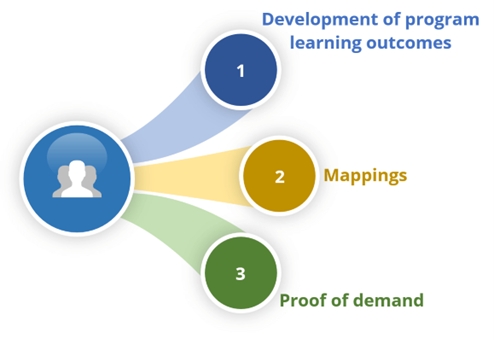Part one: PLO - Degree level expectations (DLE) - uOCompetencies mapping
Objective: determine the alignment of program learning outcomes with degree-level expectations (DLE’s) and uOCompetencies.
How will we do it?
Our analyst will work in close collaboration with you and walk you through the steps during bi-weekly meetings to support you develop program learning outcomes.
A series of self-paced online modules available on Brightspace explains the basic terminology and reviews the whole process. Your academic unit may wish to review these modules, either before or after connecting with our analyst.
Main actors
Professors who will be offering courses and other instructional activities (for consultations and validation of the mapping).
Deliverable
A correspondence table showing the mapping between DLE’s, PLO’s and uOCompetencies.
